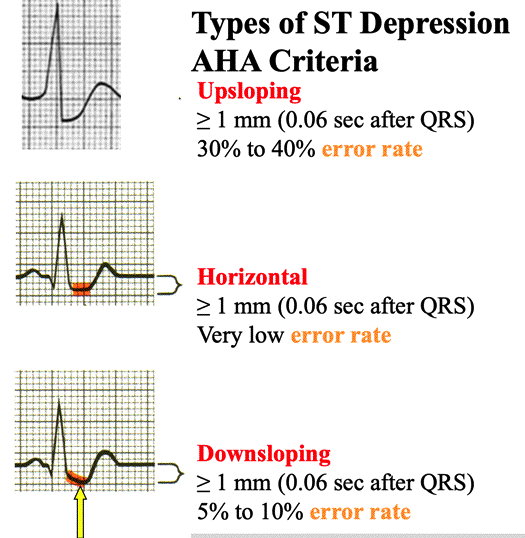| November 23 - November 28: Introducing the Nonconducted PAC, Review of ST Segment Elevation and ST Segment Depression, How to Calculate the QTcorrected (QTc) OBJECTIVES: Be able to correctly indentify a nonconducted PAC Be able to correctly measure ST Segment Elevation and ST Segment Depression Be able to identify calculate a QTcorrected Class, Please download the EXAM FIRST. We are working through MOST Exam questions in the YOUTUBE video lectures. Click Here to Download Exam 4 Part C due Saturday (due to Thanksgiving Holiday) November 28 by 12 Midnight |
||||||||
| The Nonconducted PAC | ||||||||
 |
||||||||
| CLASS, YOU REPORT THE UNDERLYING RHYTHM, RATE, P WAVES, PRI and QRS TO THE LEFT(i.e., BEFORE) OF THE NONCONDUCTED PAC! AND WITH NONCONDUCTED PACS, STATE WHAT COMPLEX IT FOLLOWS--IN EKG ABOVE THE NONCONDUCTED PAC OCCURS AFTER THE 3rd COMPLEX. | ||||||||
| The QTcorrected (QTC) | ||||||||
| Class, we use Bazett's Formula for the Calculation of QTc. See more on Dr. Bazett below. | ||||||||
 |
||||||||
| A QTc greater than .50 sec (>.50 sec) is dangerously prolonged for men and women. |
||||||||
| Here is how you calculate the QTc |
||||||||
 |
||||||||
| Class, take your RR Square root to THREE decimal places as shown (.989). Then, calculate your QTc and take it to TWO decimal places. If the 3rd significant figure of the QTc is '5' or higher please round up as above (QTc= .53 sec). | ||||||||
 |
||||||||
| Three Types of ST Segment Depresion | ||||||||
 |
||||||||
| Tips on How to Measure the ST Segment Depression | ||||||||
 |
||||||||
| 1) In many rhythms it is difficult to see where the 'S' wave ends and the actual 'J' Point. In these cases, as in the above there is a 'Flat S wave. As we have learned in class go ONE small box past the 'R' wave to establish the 'S' wave distance ('S' waves are usually about ONE small box) as shown with the Black arrow above. |
||||||||
| 2) Next, measure 1.5 small boxes (0.06 sec.) past the end of the 'S' wave as seen above with the Red arrow. | ||||||||
| 3) Lastly, simply ask yourself, 'What's Happening Here? (Blue arrow)." Is this deflection at least '1' small box or more below baseline and is it horizontal, downsloping or upsloping depression? | ||||||||
 |
||||||||
| Below are Examples of ST Segment Elevation | ||||||||
 |
||||||||
 |
||||||||
| Exam 4 Part C: Click here to get questions: Exam is due by 12midnight on November 28. No late papers accepted. | ||||||||
|